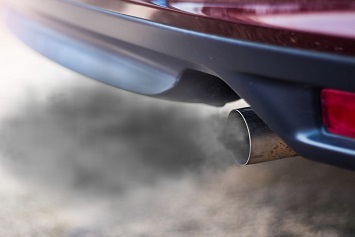At a public hearing in Fresno, California, on September 24, 2018, three of California’s top environmental officials struck back at the Trump administration’s proposed rollback of vehicle carbon dioxide (CO2) emissions standards set by the Obama administration in 2012.
The proposal would also withdraw California’s Clean Air Act (CAA) preemption waiver, a provision that allows the state to set vehicle emissions standards that differ from federal emissions standards. Mary Nichols, who chairs the California Air Resources Board (CARB), specifically attacked that part of the proposal, which she called “a flabby exercise in muscle flexing.”
While it is premature for California and other states and groups to announce that they will take legal action against EPA rulemaking still in the proposal stage, a major court battle is certain should the EPA and the National Highway Traffic Safety Administration (NHTSA)—the EPA’s partner in setting federal vehicle emissions and Corporate Average Fuel Economy (CAFE) standards—issue final standards that match the proposed standards.
LEV and ZEV Programs
In the 2012 final standards, the EPA required that manufacturers reduce GHG emissions from light-duty vehicles by an annual 5% for model years (MY) 2022 through 2025. Also, in January 2013, the EPA granted CARB’s request for a waiver of CAA federal preemption, thereby allowing the state to set its own emissions standards. Once California establishes vehicle emissions standards, the CAA allows other states to adopt those standards. Currently, 12 states, constituting about one-third of the U.S. auto market, have adopted California’s standards.
California implements its standards through its Advanced Clean Car (ACC) regulations. The ACC program includes revisions to California’s low emission vehicle (LEV) program as well as its zero-emission vehicle (ZEV) program. The 2012 federal rule continued a national program, wherein the federal government coordinated with California to ensure that all manufacturers can build a single fleet of vehicles that satisfy all requirements under both federal programs as well as California’s program.
Conflict with EPCA
All this would change under the current EPA’s proposal (August 24, 2018, Federal Register (FR)). Most importantly, the proposal would freeze the CO2 emissions standards for MYs 2021–2026 at 2020 levels; the NHTSA’s CAFE standards would be similarly frozen at 2020 levels.
The agencies state that new information analyzed since the 2012 rule led them to the tentative conclusion that holding standards constant at MY 2020 levels through MY 2026 is the maximum feasible approach to the CAFE standards and appropriate for CO2 purposes.
In addition, the agencies state that California’s regulation of tailpipe emissions, both through its CO2 standards and ZEV program, conflicts directly and indirectly with the federal Energy Policy and Conservation Act (EPCA). According to the agencies, the EPCA expressly preempts state standards related to fuel economy.
“Tailpipe CO2 standards, whether in the form of fleetwide CO2 limits or in the form of requirements that manufacturers selling vehicles in California sell a certain number of low- and no-tailpipe- CO2 emissions vehicles as part of their overall sales, are unquestionably related to fuel economy standards,” the agencies said to back up their proposed withdrawal of California’s waiver.
ZEV Popularity is Growing
At the Fresno hearing, Nichols stated that withdrawal of the waiver “rests on a flawed understanding of the role of EPCA that two federal courts have already rejected.”
Also, in its proposal, the EPA and the NHTSA asserted California’s ZEV program is unnecessary because it does not address environmental problems that are unique to California and does not provide any remedy that is unique to California. Also, the agencies state, the program results in regulatory uncertainty and increased costs for manufacturers.
These claims were refuted at the hearing by Drew Bohan, CARB’s executive director. According to Bohan, major manufacturers, such as GM, Volvo, and Toyota, fully favor ZEVs. Bohan also notes that China is on track to sell over 1 million electric vehicles in 2018 alone. Perhaps more importantly, Bohan states that the ZEVs are growing in popularity among the public.
“In California—just one state—we are making tremendous progress,” said Bohan. “We already have 450,000 Zero Emission Vehicles on our roads. And virtually all of those have been added in just the last decade. This transition to ZEVs is accelerating, with sales in July and August of this year beating all previous records—a trend we anticipate will continue as consumers see how inexpensive and exciting these cars are to operate.”
Transcripts of the testimony of California’s officials at the Fresno hearing are available here.

